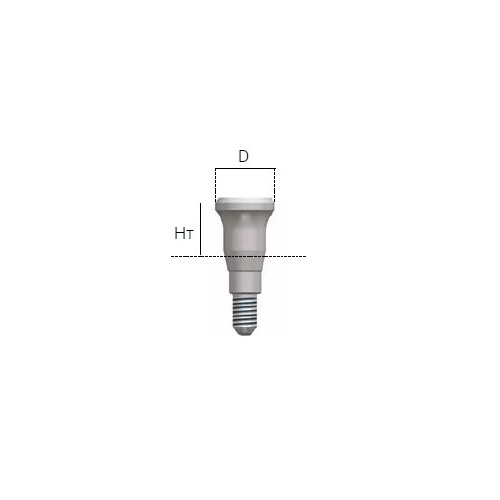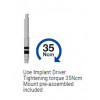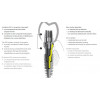Description
Multiprosthetic system with screwed conical connection. The GFA system allows to select a transosseus and/or transgingival
primary component between 5 different heights, called Gingival Former. The secondary connection, present in the coronal
position of the Gingival Former, allows to perform any type of prosthetic rehabilitation: from the single crown to the full arch,
from the cemented prosthesis to the screwed one, from the retention bar to the fixed full arch, from CAD/CAM rehabilitation
to the castable abutment. It is a new prosthetic platform with the same features of the GTB implant connection. Packaged
with carrier. Sterile packaging. Made in Ti gr.23.
ONLY USE GFA PROSTHETIC COMPONENTS
The GFA system is a prosthesis system for dental implants GTB that conceptually allows a submerged implant, crestal or subcrestal, to be used as a transmucosal implant. The GFA primary component is no longer removed duringprosthetic rehabilitation (if necessary, itis still possible to remove it easily). It can be used both as a healing abutment and as a new
prosthetic platform for secondary prosthetic components. This prevents the formation of a deep epithelial attack around the healing abutment and then around the prosthetic abutment.
How is this happening? The connection present in the implant is replicated and positioned at prosthetic platform level of the GFA
primary component. So you can choose to elevate towards a coronal position the same connection present at implant platform, bringing the same implant-abutment connection at tissue level, facilitating future prosthetic procedures.
Choosing the gingival height based on thavailable biological width, you can position thcorrect GFA primary component then leave it in place during all the prosthetic steps to be performed later, avoiding the formation of a deep epithelial attack and consequently avoiding the risk factor given by the formation of a periimplant pocket due to, in conventional treatments,
continuous positioning and removal of healing and prosthetic components



